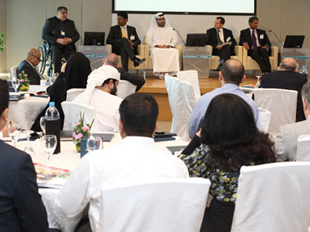Previous Comments
- No comments found

The Gulf’s real estate sector largely bottomed out in 2012 and prospects for most countries look promising as governments took measured steps to ease the pain suffered by developers, financiers and investors over the past few years.
New regulations, mergers and greater efforts by the authorities to revive the industry are already paying off in certain jurisdictions. Regional investors have taken note of the changing real estate landscape. Latest figures from the GCC Secretariat General Information and Statistics Centre showed GCC investors increased their exposure to the regional real estate market by 51.1% in 2012, compared to the previous year.
Kuwaitis led the regional investor march, buying 8,300 property units across the Gulf region, followed by Saudis (2,312 units) and Emiratis (2,267 units) during the year. Not surprisingly, the UAE property market saw the largest influx of Gulf investments. “Real estate remains a popular asset class among Middle Eastern investors, with more potential buyers than sellers in most markets,” notes a Jones Lang LaSalle report.
Emboldened by the rising prospects in the Gulf’s property market, a majority of investors expect to invest more USD 50 million in the sector over the next 12 months, according to a recent survey by the consultancy.
In the UAE, Dubai’s real estate sector has picked up as investor confidence improved. “Post the 2008 downturn the market was quiet for two years and we saw signs of revival in 2011. 2012 was the best year since in terms of prices strengthening and renewed appetite for investment,” said Helen Tatham, director of residential in Dubai, at London-headquartered Knight Frank consultancy.
Dubai has regained its status as the preferred investment market within MENA region, largely because of the following factors: recovery in prices and rental values; greater transparency; more investment grade real estate than in other Middle Eastern markets; and a developed infrastructure, according to JLL.
“This trend seems to be particularly the case in Dubai, where potential buyers outnumbered sellers by a large margin than in other cities,” notes JLL.
While the UAE real estate market is a Gulf favourite, Saudi Arabia is also emerging as a promising market thanks to new mortgage laws and massive plans to build new real estate developments across the country.
The kingdom’s total housing stock is expected to rise from 4.6 million units by 2010 to 7 million by 2020, with annual demand rising by nearly a quarter of a million each year.
Apart from various initiatives by the private sector, the real estate development fund is expected to inject a staggering SAR 250 billion (or USD 68 billion) to finance a number of the projects, especially at the low-cost housing level.
Other regional markets are also showing signs of growth.
In Qatar, the value of real estate deals rose 59% in 2012, compared to the previous year, as demand soared thanks to the influx of expatriates in preparation for the 2022 FIFA World Cup.
Kuwait has also seen loans for new construction rise 166% in the first 11 months of 2012, compared to the same period of the previous year, while the value of residential sales grew nearly 57% during the year
Add Comment